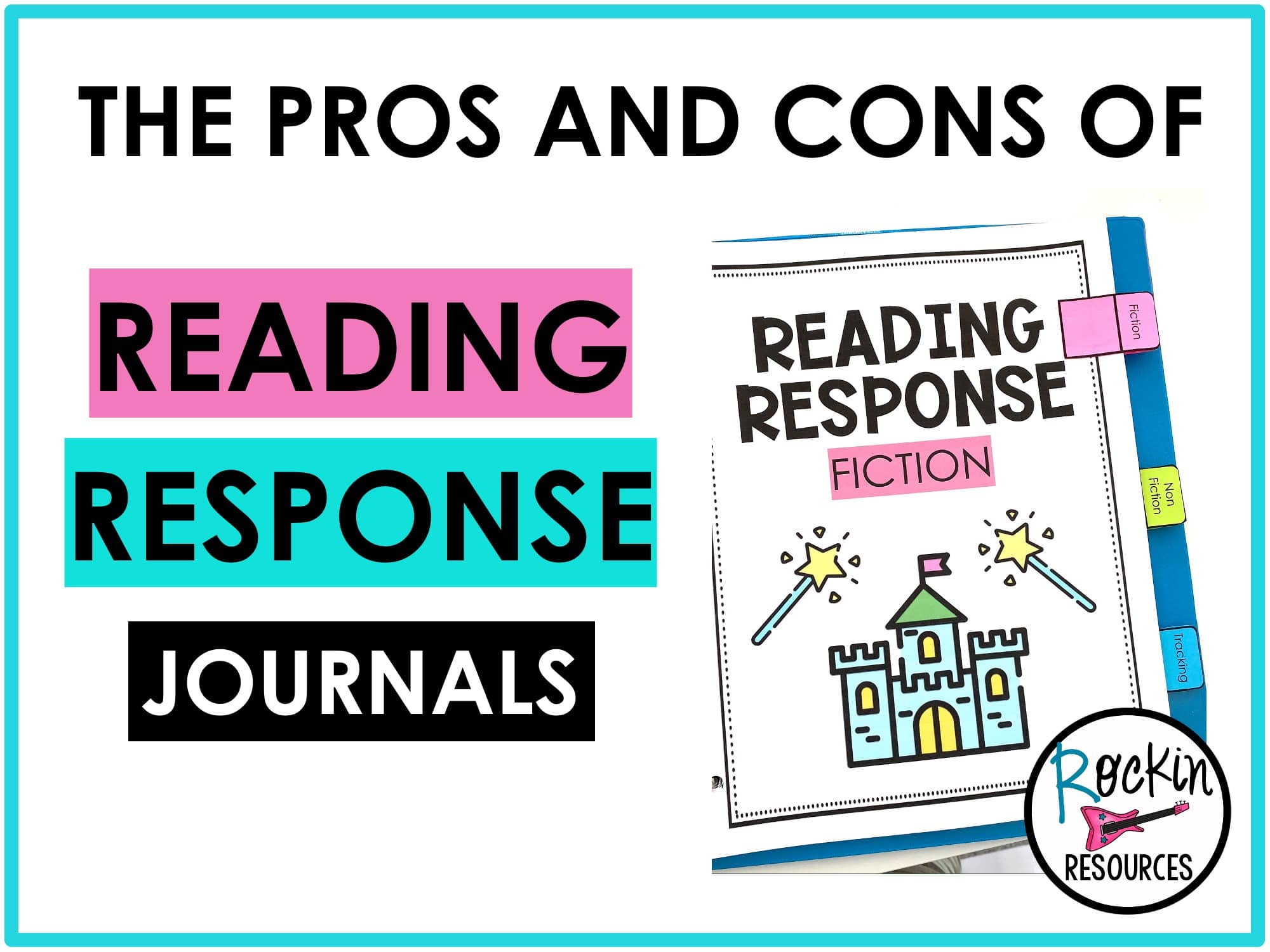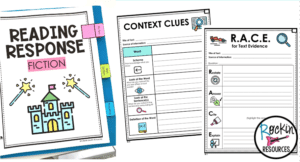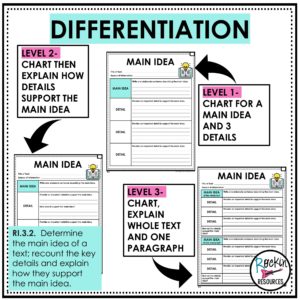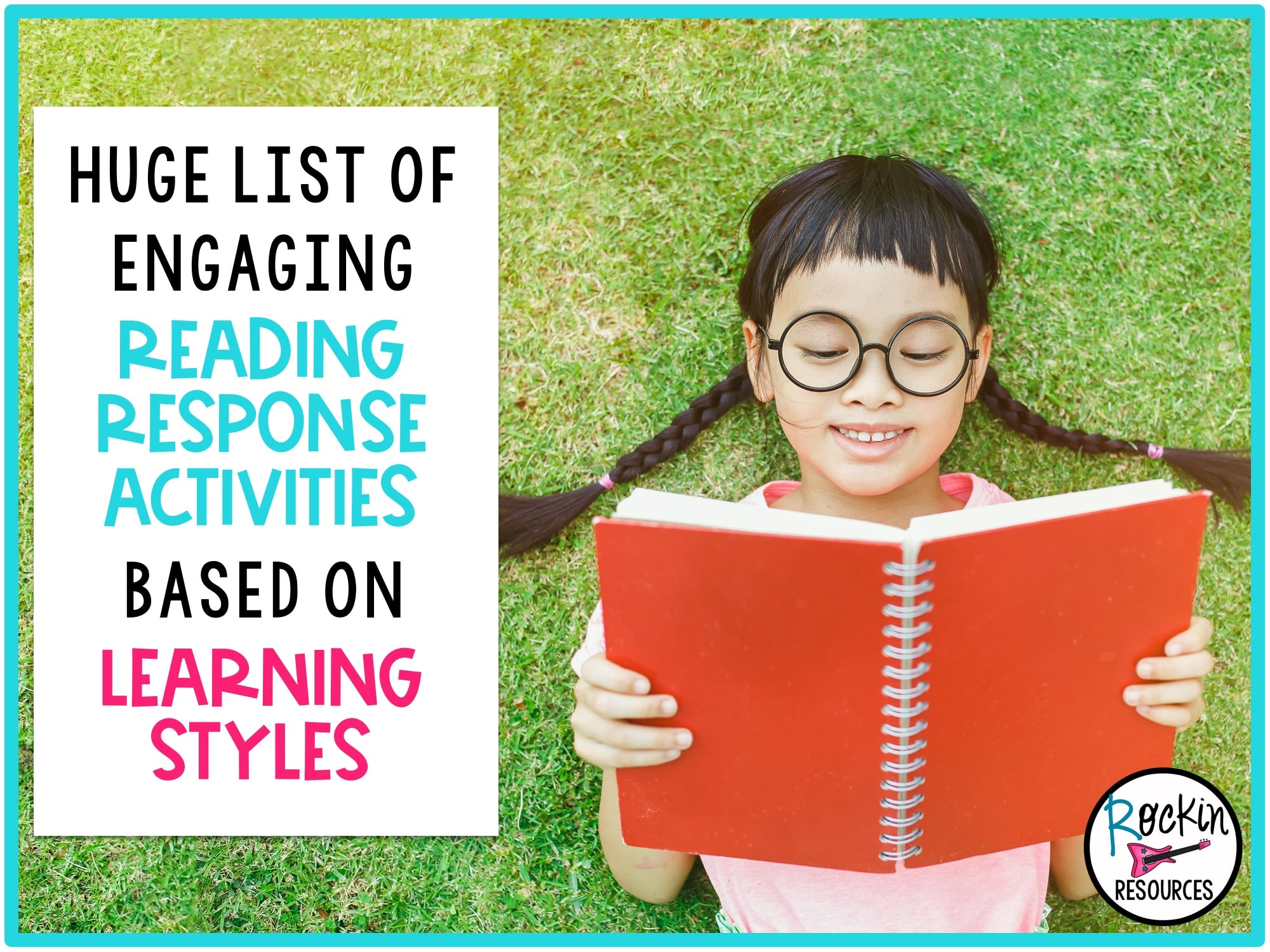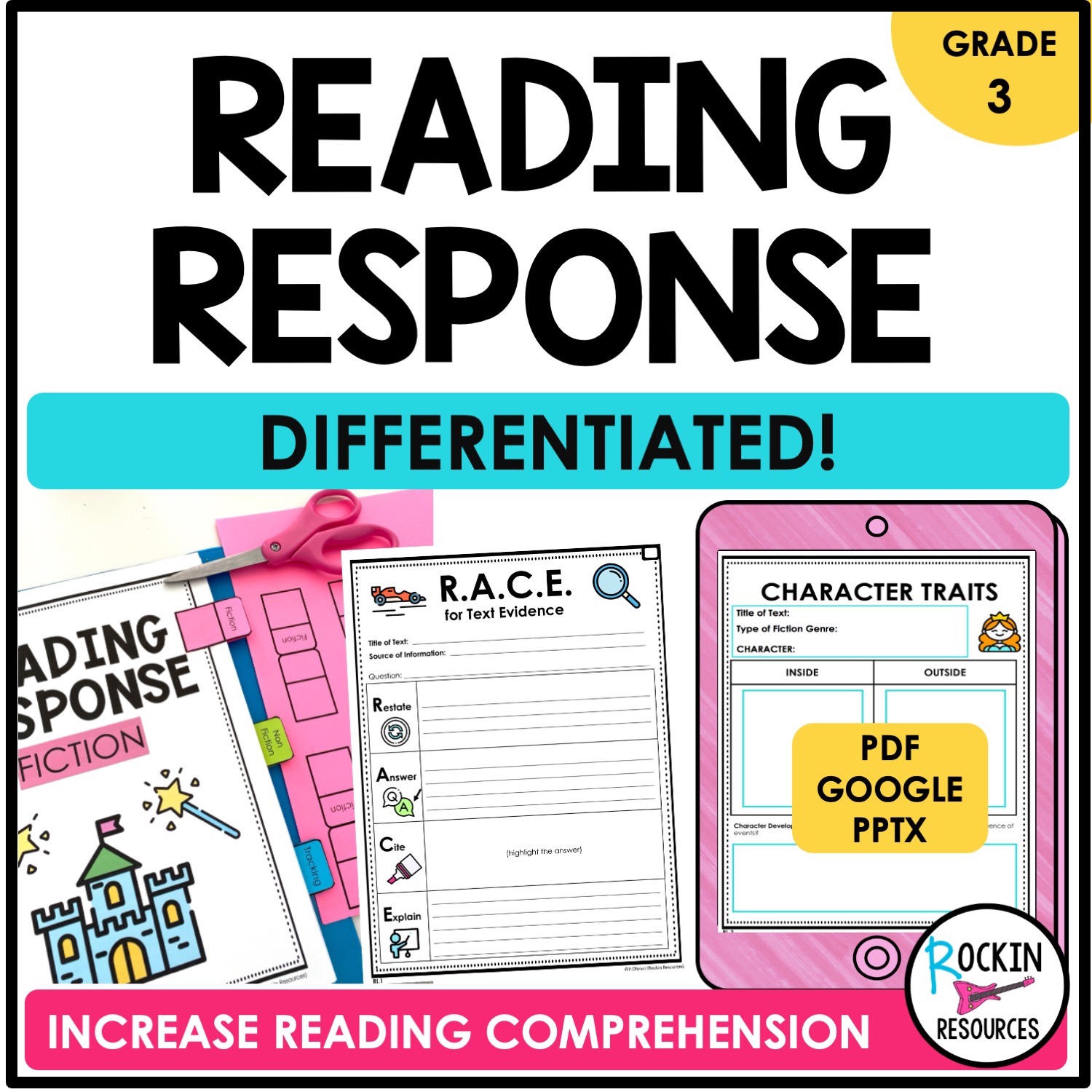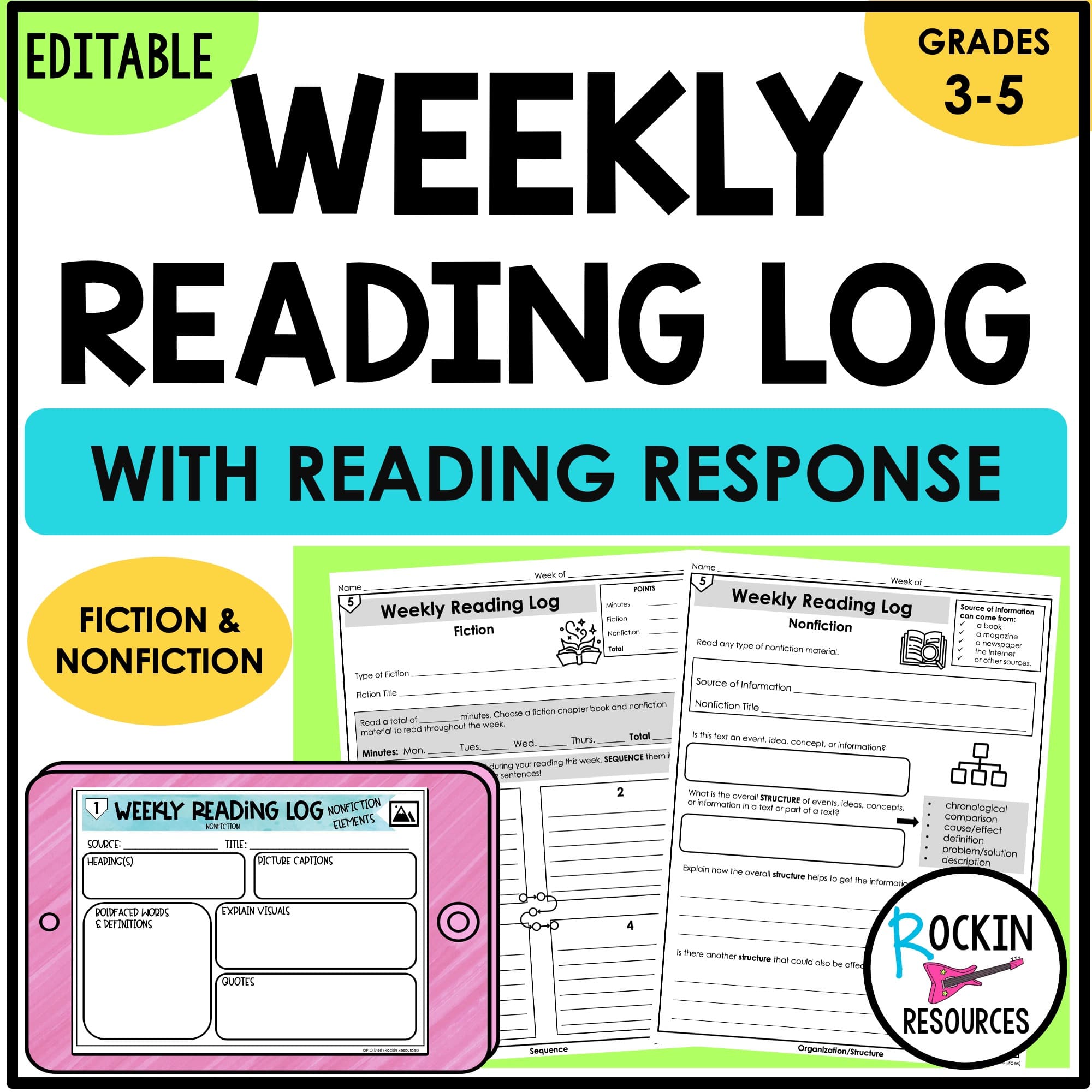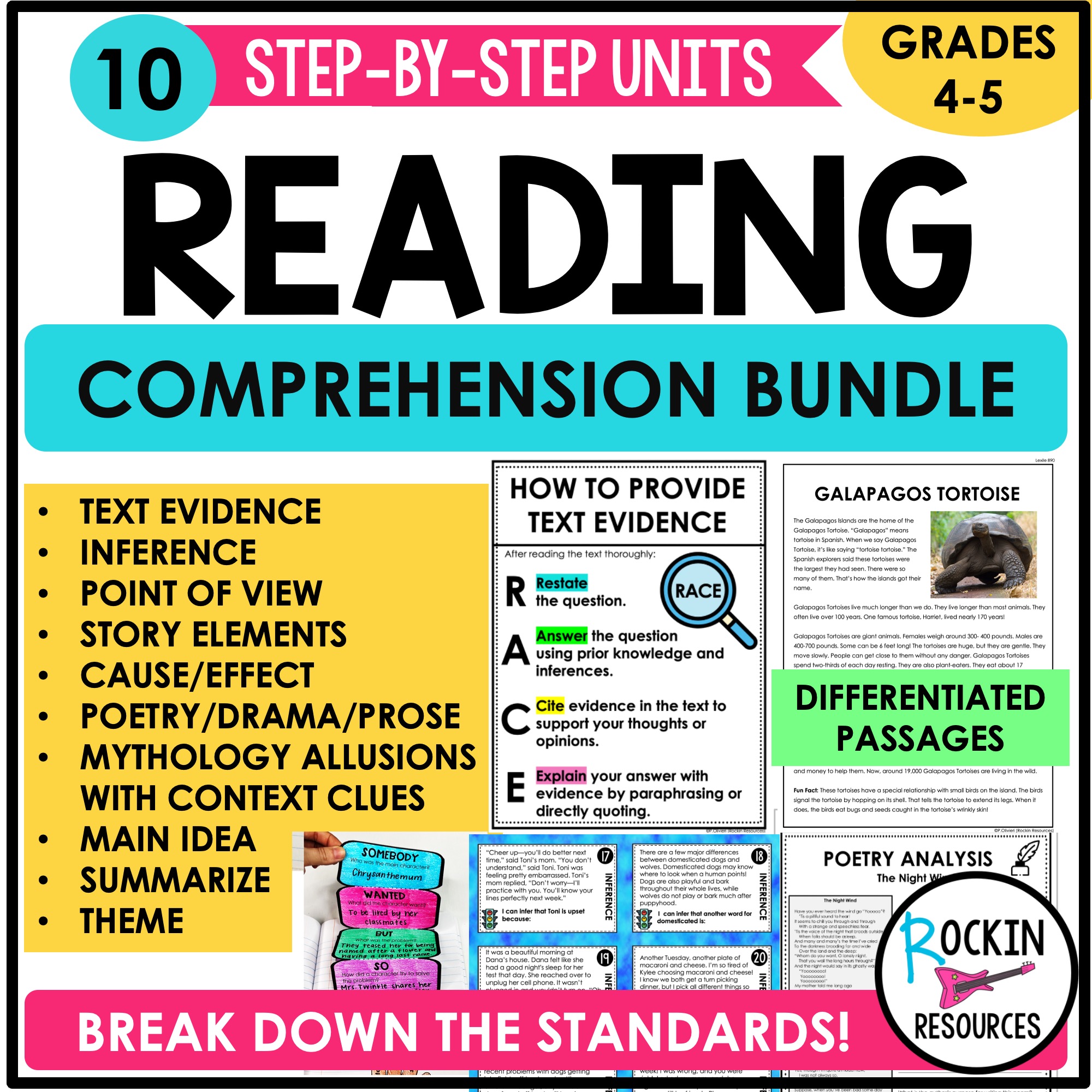A READING RESPONSE JOURNAL is a journal where students are asked to record their interactions with reading. This can be simple fact-finding or a personal reflection and connection to the text. Reading response journals can be a wonderful and meaningful way to track authentic growth as a reader—so why aren’t more teachers using them? Read on for THE PROS AND CONS OF READING RESPONSE JOURNALS.
LET’S START WITH THE CONS
These are some things teachers are saying:
- They can become lackluster and repetitive.
- They can cause frustration for students who are not strong writers.
- Some lend themselves better to fiction or nonfiction without options for variety in reading (something independent reading should encourage!)
Just as reading response has its pitfalls, so do standard reading response journals. Many students fall into the trap of summarizing what they’ve read without adding their own reflections. Many students make tangential connections, but show no understanding of the author’s message. In other words, reading response journals could offer an opportunity to improve dozens of reading and writing skills, but too many of those chances are missed without proper differentiation. Moreover, teachers may not have time to differentiate individual reading choices for twenty to thirty students!
Because it seems that reading response journals can have a limited range of usefulness, many teachers don’t bother with them. That’s where STANDARD-BASED DIFERENTIATE reading response organizers are a game changer!
NOW LET’S TALK ABOUT THE PROS!
Use Standard-Based Differentiated Reading Response Organizers!
What are Standard-Based Differentiated Reading Response Organizers?
Reading response organizers from Rockin Resources offer a variety of styles and options for meaningful written responses in the form of guided prompts and graphic organizers for each reading standard. Some may help students understand or connect to text, while others challenge readers to be detectives, searching for specific types of information.
Say GOODBYE TO BLANK PAGES and HELLO TO A REFERENCE TOOL! Instead of a notebook of blank pages because students don’t know what to write, these differentiated organizers promote reading comprehension with GUIDED questions, notes, and specific prompts. Having the skills all in one place will provide students with a reference tool that will also serve as a place for you to review skills with them!
Why use Reading Response Organizers?
There are many reasons to use Standard-Based Differentiated Reading Response Organizers.
- GUIDE: Students are guided in their response, so they know what to write.
- STANDARD-BASED: They are standard based so you can be sure to cover all literature and informational text standards.
- DIFFERENTIATION: They meet the needs of diverse learners in your classroom. The organizers offer 3 levels of differentiation so that your reluctant learners, on-level students, and students who need an extra challenge are all successful with the same standard.
- COMPREHENSIVE: They provide teachers a chance to help with the pitfalls of reader response, such as students overlooking the author’s intended meaning or their perspectives being limited by lack of empathy or experiences.
- REFERENCE: They provide the students with a reference tool to know how to respond to that skill in the future.
- CONFIDENCE: Students build confidence working on their level.
That’s why it makes sense to support your students with a guided graphic organizer, just as if they were doing any other sort of writing.
How do I use these Reading Response Organizers?
Reading Response organizers can be utilized in class during literature circles, independent reading time, or at home as part of nightly reading homework. You can print out the organizers as needed, put all sheet in a binder to keep them in one place, or share them digitally for students who are remote or who need to type for an accomodation. Ideally, the journal can be used for both in-class and at-home work, traveling back and forth like a lunchbox.
Here are a few examples of how you can utilize them in different settings.
WHOLE CLASS: Are you trying to complete a dense chapter in social studies or science? Are some of your students struggling to comprehend the material and put it into their own words? Reader response organizers for nonfiction offer a variety of ways to guide students to interact meaningfully with the text to get the most out of it. Use graphic organizers such as text feature analysis and vocabulary study during reading to help students make sense of the text and bolster comprehension. After reading a chapter as a whole class, pass out the reader response organizers you think will be the most beneficial to help students process what they read and put it in their own words. This will lead to a more robust understanding of the text and help you see what your students truly understood.
SMALL GROUP: If you’re like many teachers, you have students splitting into small groups to read novels in class. They’re often grouped by interest or difficulty level. Use the differentiated organizers for the specific skill you are teaching during direct instruction and mini-lessons for all readers. For example, each reading skill offers 3 levels of differentiation and designed to help you. All students will be applying the same skill at their own level and you can monitor student comprehension.
Or use different skills for the leveled groups. You might have a higher reading group who has moved on from simply summarizing. You could assign them reading response organizers to analyze quotes and create text-to-text connections. Meanwhile, a lower reading group could be scaffolded with reader response organizers that focus on reading basics, such as sequencing and identifying story elements.
INDIVIDUAL: Do you require nightly reading logs for each student? Do you have independent reading time a few times a week in your classroom? If you’ve ever worried that kids are skimming the pages while their minds are elsewhere, reader-response organizers are your new best friend. It will keep them accountable for their reading. You can:
- Student Choice: Leave a stack of fiction and nonfiction organizers by your classroom library and tell students to select their favorite one to pair with that day’s reading or tell students to pick an organizer they haven’t tried yet!
- Teacher Choice. This is your chance to give students the organizer you think they need the most to help them with a specific skill. A packet of reading response organizers sent home at the beginning of the month or week to accompany reading homework will also give you a tangible way to check on your students’ progress as independent readers.
Can one graphic organizer be reused?
Absolutely! They can be reused when applied to a different text. For example, you can use it in class with one text, at home with another text, and later in the year with yet another text! Track students’ progress and use those results toward the end of the year for small group review!
Teachers are always looking for ways to differentiate and offer resources and tools to meet the needs of all learners. Reading response organizers are a wonderful way to upgrade your reading assignments to meet the diverse learning needs of your students and individualize instruction with minimal prep work. This one easy tool can transform the way your students write about reading! It will also add variety and challenge for them while adding versatility and another formative assessment for you! Reading response organizers are a win-win!
SEE SIMILAR BLOGS:
DISCOVER RELATED RESOURCES:
-
3RD GRADE READING RESPONSE JOURNAL – READING RESPONSE WORKSHEETS
Original price was: $9.99.$7.00Current price is: $7.00. -
4TH GRADE READING RESPONSE JOURNAL – READING RESPONSE WORKSHEETS
Original price was: $9.99.$7.00Current price is: $7.00. -
5TH GRADE READING RESPONSE JOURNAL – READING RESPONSE WORKSHEETS
Original price was: $9.99.$7.00Current price is: $7.00. -
Step-by-Step Reading Skills for Reading Comprehension Bundle 1
Original price was: $83.92.$68.99Current price is: $68.99.
SHARE THIS POST ON PINTEREST:


